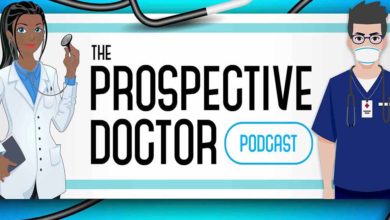Dr. Erkeda DeRouen talks to Emma Goldberg. Emma is a researcher and writer for the New York Times, focusing on medicine and medical education. She is interested in racial and gender inequities within medicine. She loves reading about the culture of medicine and the perspective of physicians on the issues they face. Emma believes that her work on medicine and the culture of medical education empowers patients to form better relationships with their physicians. Erkeda talks to Emma about her new book Life on the Line: Young Doctors Come of Age in a Pandemic and what the pandemic has exposed about the healthcare system in the US.
- [00:22] Introducing Emma Goldberg
- [02:10] Life on the Line: Young Doctors Come of Age in a Pandemic
- [06:35] The Roots of the Homogeneity of Medicine
- [09:39] What the Pandemic Has Exposed about Healthcare
- [13:06] The Change Emma Believes Healthcare Needs
- [15:45] Get in Touch with Emma
Emma’s book: Life on the Line: Young Doctors Come of Age in a Pandemic
When the pandemic first hit New York City, some graduate schools decided to move up their graduations so that fourth-year students could take their places in the front line and help in the treatment of covid-19 patients. Emma wrote an article about the incident for the Times before she started following a group of medical students and documenting their daily experiences. As she learned about their experiences, she was inspired to give a voice to the unique experiences of these young doctors in a book.
The group of doctors that Emma followed was not conventional in a lot of ways. They comprised a Hispanic doctor, a first-generation American, an orthodox Jew, and a doctor from the LGBTQ community. The latter was particularly motivated to contribute to the pandemic response because of the AIDS crisis and what he saw as a failure to respond by the medical community.
The Roots of the Homogeneity of Medicine
Through her research, Emma learned that the field of medicine was not always as homogenous as it is now. Over a century ago, more medical schools were training black doctors and other people from low-income communities. At some point, medical “reformists” embarked on their mission to make the field more exclusive, and as a result, exclusionary.
In the Flexner report, Abraham Flexner called for the closure of a lot of medical schools. His recommendation inevitably had a disproportionate effect on rural and black medical schools across the US. The homogeneity of medicine results from concerted efforts of members within the community to make the field more restrictive.
What the Pandemic Has Exposed about Healthcare
Emma believes that the pandemic has challenged the medical community to think creatively about building trust between physicians and the public. The doctors that Emma followed reported that it was not easy to form doctor-patient relationships with trust. The pandemic required doctors to spend less time with patients than they might have to limit exposure to the virus. And they had PPE and language barriers that often made it difficult to communicate.
The pandemic also disproportionately affected marginalized communities. And since black patients have better outcomes when treated by black doctors, the pandemic exposed the need to train a more diverse generation of doctors.
According to Emma, the youngest doctors in the field should be given a platform to share their views about healthcare and what needs changing. New doctors can often identify gaps that veterans can’t.
You can get in touch with Emma on Twitter, and you can find her book Life on the Line: Young Doctors Come of Age in a Pandemic at Barnes & Noble, Indie Bound, Amazon, or at your local bookstore.

